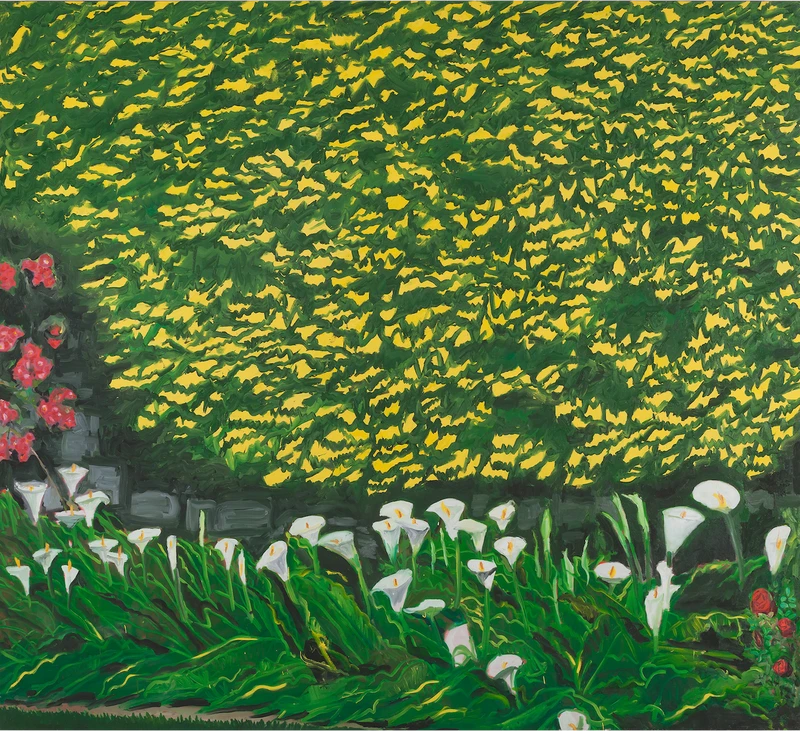Paul Georges
20 Apr-25 May 2023
PV 20 Apr 2023, 6-8pm


Simon Lee Gallery is proud to present the first U.K. solo exhibition of American figurative painter Paul Georges (1923 – 2002). Spanning nearly five decades of his career, this ground-breaking exhibition documents an oeuvre that defies simple categorization, rejects the stylistically dominant trends of Post-War American art, and offers cutting observations of the political, artistic, and social life of Georges’ time. His provocative and controversial paintings position Paul Georges as a central pioneer against censorship of the arts; his arduous 10-year lawsuit made him a leader in the fight for the freedom of expression in the visual arts.
The paintings on view anchor important moments in Georges’ travels, and elucidate the issues that most concerned him. The exhibition represents work from throughout Georges’ career, starting with the critical period in the development of his unique style while studying abstraction in Provincetown, MA in 1947 under Hans Hofmann. The influence of European Modernists becomes evident in his work following his move to Paris in the 1950s to work with Fernand Léger, until his return to the U.S., where the Long Island landscape formed the backdrop for Georges’ signature narrative works that incorporated his family, friends, foes, and often himself to create allegorical history paintings. Finally, later in life, abstraction and landscape painting converge once again in Georges’ practice as he moved to the countryside in France.
In Provincetown, MA in 1947, Georges met lifelong friends Clement Greenberg, Jane Freilicher, and Larry Rivers while studying at the summer school run by the influential artist Hans Hofmann. There he absorbed Hofmann’s instruction on using colour abstractly and spatially, rather than descriptively, a defining characteristic of Georges’ visual aesthetic. Although the influence of Post-War abstract art can be seen as a central line through many of his works, Georges was primarily in stylistic contention with his New York School peers, favouring confrontational narration over the limiting purity of Abstract Expressionism.
Georges moved to Paris in the early 1950s to seek the instruction of Fernand Léger, and his paintings from this time belie the influences of Picasso, Matisse, and Cézanne, particularly in the colour palette and brushwork that began to mark his practice. Additionally, this time studying in Europe contributed to Georges’ interest in allegorical history painting, which would become a recurrent motif throughout his oeuvre.
Upon returning to the US, Georges continued to develop his visual language exploring mythology as a means to paint allegorical figurative landscapes such as Bacchanal (1958) and Elysian Dreams (1957-58). The expressive, dynamic, and fluid brushstrokes, alongside the rich swathes of green and blue hues seen in these works marry the influences of his extraordinary teachers with Georges’ renewed focus on narration, using mythology and history painting as a tool to critique contemporary politics.
Political and unafraid of controversy, in the 1960s Georges decided to tackle more complex issues in the scale of large-format history paintings. His paintings from this period are provocative and often centralize himself, his family, and “the muse.” As a WWII veteran,Georges believed that abstraction alone was insufficient to express his humanistic beliefs, particularly where the effects of war and human rights were concerned. His leftist politics were evident in these paintings which depict key Civil Rights figures, heavily criticise conservative government policies, and oppose the Vietnam War, a stance for which Georges was often subjected to criticism.
Georges was deeply engaged with left-wing politics, and his work often took a critical view of contemporary life. At a time when artists were suppressing emotions or expressing them silently in the blankness of Minimalism, Georges was trying to expand the emotional plane by resurrecting a language of the past and using it to critique current issues.
The works on view present an engaging view of a complex and controversial artist. The exhibition will be accompanied by a richly illustrated catalogue featuring an essay by scholar Jeremy Lewison.
Paul Georges | press release
Download